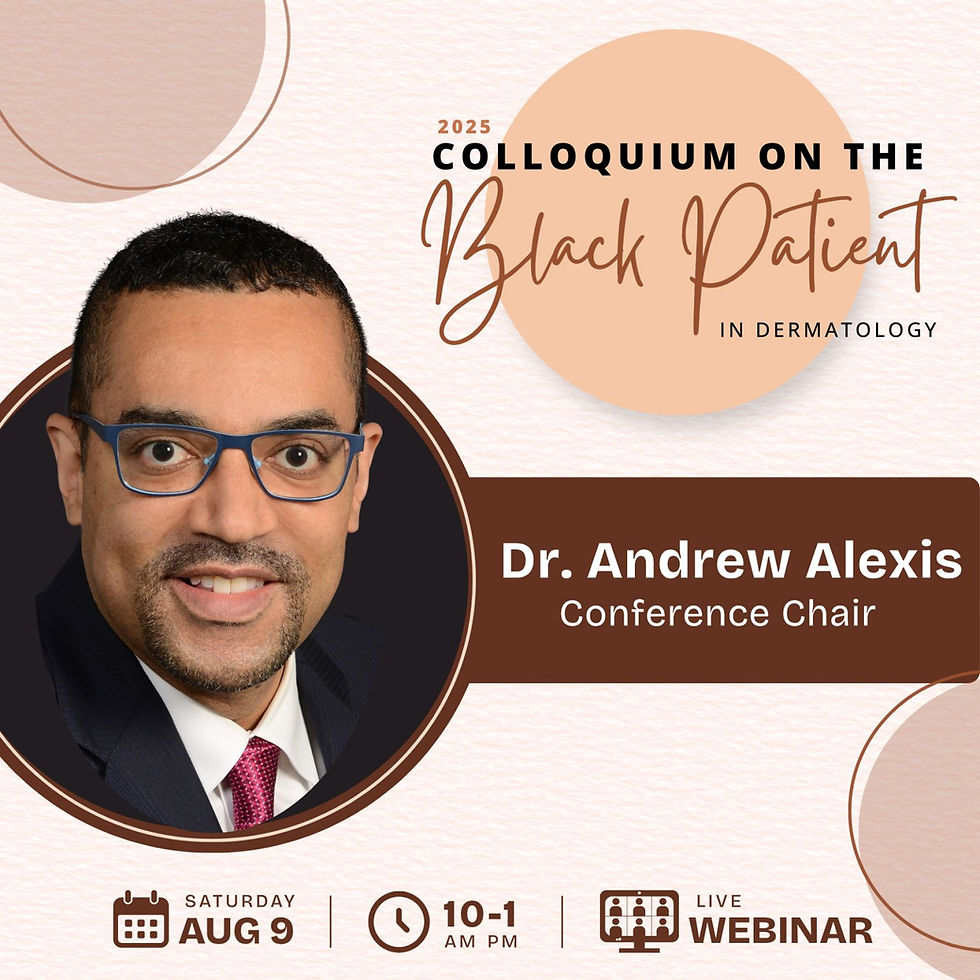SSS 2017: Treatment and management recommendations for hidradenitis suppurativa
- by Lynn Bradshaw, Senior Editor
- Apr 17, 2017
- 3 min read
Early diagnosis and aggressive treatment of hidradenitis suppurativa (HS) is important and can make a significant difference in the lives of these patients, according to Toronto-based dermatologist Dr. Afsaneh Alavi.
“HS is a chronic and debilitating disease that commonly [occurs] in the young population of patients after puberty. HS is three times more common in female patients,” said Dr. Alavi, speaking at the 3rd annual Skin Spectrum Summit in Toronto on Apr. 8, 2017.
Dr. Alavi reviewed the epidemiology and clinical presentations of HS. In a case-based discussion, she also shared with the delegates some of her experience treating and managing HS patients.
Prevalence of HS uncertain
“There is considerable uncertainty regarding the prevalence of HS. The prevalence over recent decades has been associated with a significant degree of unexplained discrepancy ranging from 0.05 per cent to four per cent,” said Dr. Alavi, assistant professor of dermatology, Department of Medicine (Dermatology), University of Toronto.
Dr. Alavi continued her presentation and noted that data from a small cross-sectional study of 80 patients with HS suggested that 40% of the participants had HS for more than five years prior to receiving a diagnosis. The findings from this study were published in the Journal of Cutaneous Medicine and Surgery (Jan. 2016; 20(1):52–57).
“In this study, 56 per cent of HS patients were diagnosed by a dermatologist,” she said.
There are many tools to classify HS, but the Hurley staging system, developed by a surgeon, is the most popular, said Dr. Alavi.
HS Tx options, recommendations
The journey for treatment of these patients begins at diagnosis, explained Dr. Alavi. She encourages that people with HS be evaluated for metabolic syndrome, anemia, and other potentially associated diseases.
“People with HS should be encouraged to stop smoking and lose weight,” she said. “For young patients with HS classified as Hurley stage I, I recommend laser hair removal [as a preventive measure] because then they do not have to shave and it decreases the flare. There is no supporting data suggesting the benefits of laser hair removal, but many experts have the same opinion.”
For young female patients, whose HS flares during their menstrual period, Dr. Alavi noted that antiandrogens are recommended.
Dr. Alavi explained that there are many options for the treatment of HS including topical treatment, a short course of oral antibiotics, and intralesional steroids.
A biologic, adalimumab, has also been approved by Health Canada for treatment of patients with moderate to severe HS.
During Dr. Alavi’s presentation, she briefly described a case of a young female patient with HS who was treated with adalimumab. At six weeks’ post-adalimumab therapy, Dr. Alavi said the following improvements were observed:
This patient had improved range of motion for both upper limbs.
Decrease in pus discharge.
Decrease in the size of the abscess.
Surgical interventions for HS Tx
For HS patients with minimal disease occurrence, deroofing with minimal excision can be done in a clinical setting, but Dr. Alavi noted that there is no current code for compensation.
Dr. Alavi recommends excisional surgery or C02 laser therapy for the treatment of larger regional HS lesions.
“It is important for HS patients with Hurley stage II to be optimized medically prior to surgery unless there is only a scar remaining—otherwise there is a high chance of re-occurrence,” she said.
“After surgery, these HS patients need physiotherapy, and sometimes these patients often also require medical therapy for their HS after surgery to treat the flare,” Dr. Alavi said.
Every patient with HS will require pain management strategies, she said. “Also, if they have an ulcer then they require wound care advice.”
Dr. Alavi emphasized that early diagnosis and aggressive treatment of HS is important to help prevent the mental and physical sequela of this condition from developing.
Learn more about the Skin Spectrum Summit at www.skinspectrum.ca.












Comments